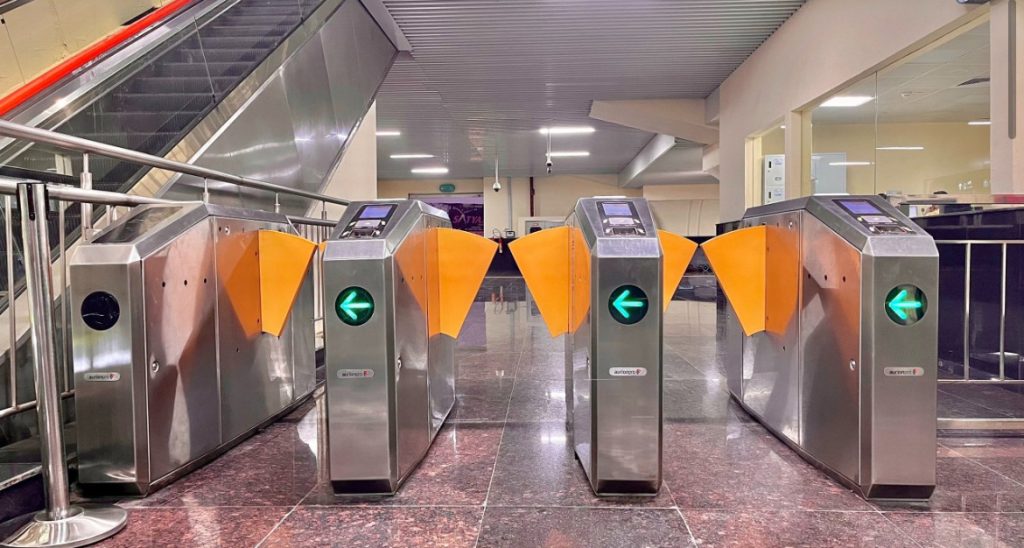
Automatic Fare Collection Gates (AFCs) have become integral to modern public transportation systems. These electronic devices streamline the fare collection process, providing passengers with a more efficient, convenient, and secure experience. In this blog post, we will explore the various roles of AFCGs in public transportation and how they contribute to overall system efficiency.
Improving Passenger Experience
- Speed and Convenience: AFC’s eliminate the need for manual ticket checking, reducing waiting times and improving the overall passenger experience.
- Contactless Payment: Many AFCGs support contactless payment options, such as credit cards or mobile wallets, offering a quick and convenient way to pay fares.
- Accessibility: AFCGs can be designed to accommodate passengers with disabilities, ensuring that everyone can easily use the public transportation system.
Enhancing System Efficiency
- Reduced Fare Evasion: AFCGs help prevent fare evasion by ensuring that all passengers pay the appropriate fare. This can increase transportation agencies’ revenue.
- Real-Time Data: AFCGs collect data on passenger flows, which can be used to optimize service frequency and routes, improving system efficiency.
- Improved Security: AFCGs can be integrated with security systems to track passenger movements and identify potential security threats.

Types of AFCGs
There are several types of AFCGs used in public transportation systems, including:
- Turnstile Gates are the most common type of AFCG. They feature a rotating barrier that allows passengers to enter or exit after paying the fare.
- Swing Gates: Swing gates have a single barrier that swings open and closed, allowing passengers to pass through.
- High-Speed Gates: High-speed gates are designed for high-volume stations, allowing multiple passengers to pass through simultaneously.
- Card Readers: Card readers are often used with other AFCGs to allow passengers to tap their fares or contactless payment cards.
Case Studies
To better understand the impact of AFCGs on public transportation systems, let’s examine a few case studies:
- London Underground: The London Underground has implemented a comprehensive AFCG system, using Oyster cards for fare payment. This system has significantly improved efficiency and reduced fare evasion.
- New York City Subway: The New York City Subway has also adopted AFCGs, focusing on contactless payment options. This has made it easier for tourists to use the system.
- Singapore MRT: The Singapore Mass Rapid Transit (MRT) system uses a contactless smart card called the EZ-Link card. This card can be used for public transportation, retail purchases, and other services.
Future Trends
We can expect to see even more innovative AFCG systems as technology advances. Some potential trends include:
- Biometric Authentication: AFCGs may be integrated with biometric technologies, such as facial recognition or fingerprint scanning, to provide a more secure and convenient way to pay fares.
- Mobile Ticketing: Mobile apps may purchase and validate tickets, eliminating the need for physical cards.
- Integration with Other Services: AFCGs could be integrated with other services, such as bike-sharing or car-sharing, to provide a seamless travel experience.
Additional Considerations for AFCG Implementation
Integration with Other Systems:
AFCGs should be integrated with other transportation systems, such as bus networks and commuter rail lines, to maximise efficiency and convenience. This allows passengers to use a single card or app for all their travel needs.
Accessibility for All:
AFCGs must be designed to accommodate passengers with disabilities. This includes providing options for visually impaired passengers, such as audible announcements and tactile cues, and ensuring the gates are accessible to wheelchair users.
Data Privacy and Security:
AFCGs collect data on passenger movements, which must be handled carefully to protect privacy. Transportation agencies should implement robust data privacy and security measures to prevent unauthorized access or misuse of personal information.
Cost-Benefit Analysis:
Implementing AFCGs can be a significant investment. Transportation agencies must conduct a thorough cost-benefit analysis to evaluate the potential benefits and costs associated with the project. This includes considering factors such as increased revenue, reduced operational costs, and improved passenger satisfaction.

Maintenance and Upkeep:
AFCGs require regular maintenance and upkeep to ensure their proper functioning. Transportation agencies should allocate resources for maintenance and repairs to avoid disruptions to service.
Final thoughts
AFCGs have revolutionized public transportation systems, offering passengers a more efficient, convenient, and secure experience. By improving passenger satisfaction, reducing fare evasion, and enhancing system efficiency, AFCGs play a vital role in the success of modern transportation networks. We can expect to see even more innovative AFCG systems as technology evolves.

